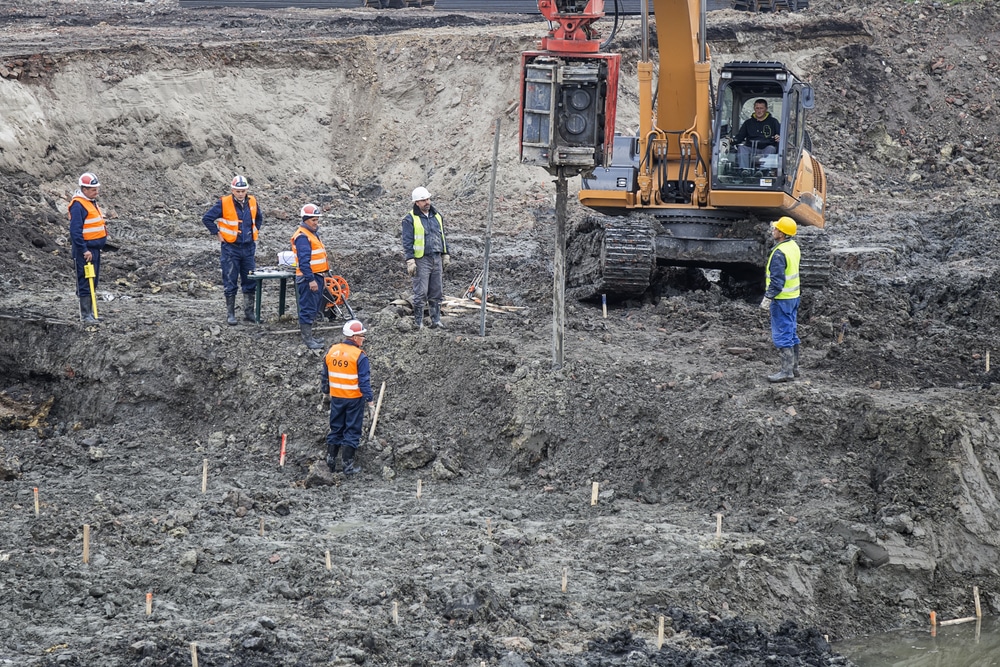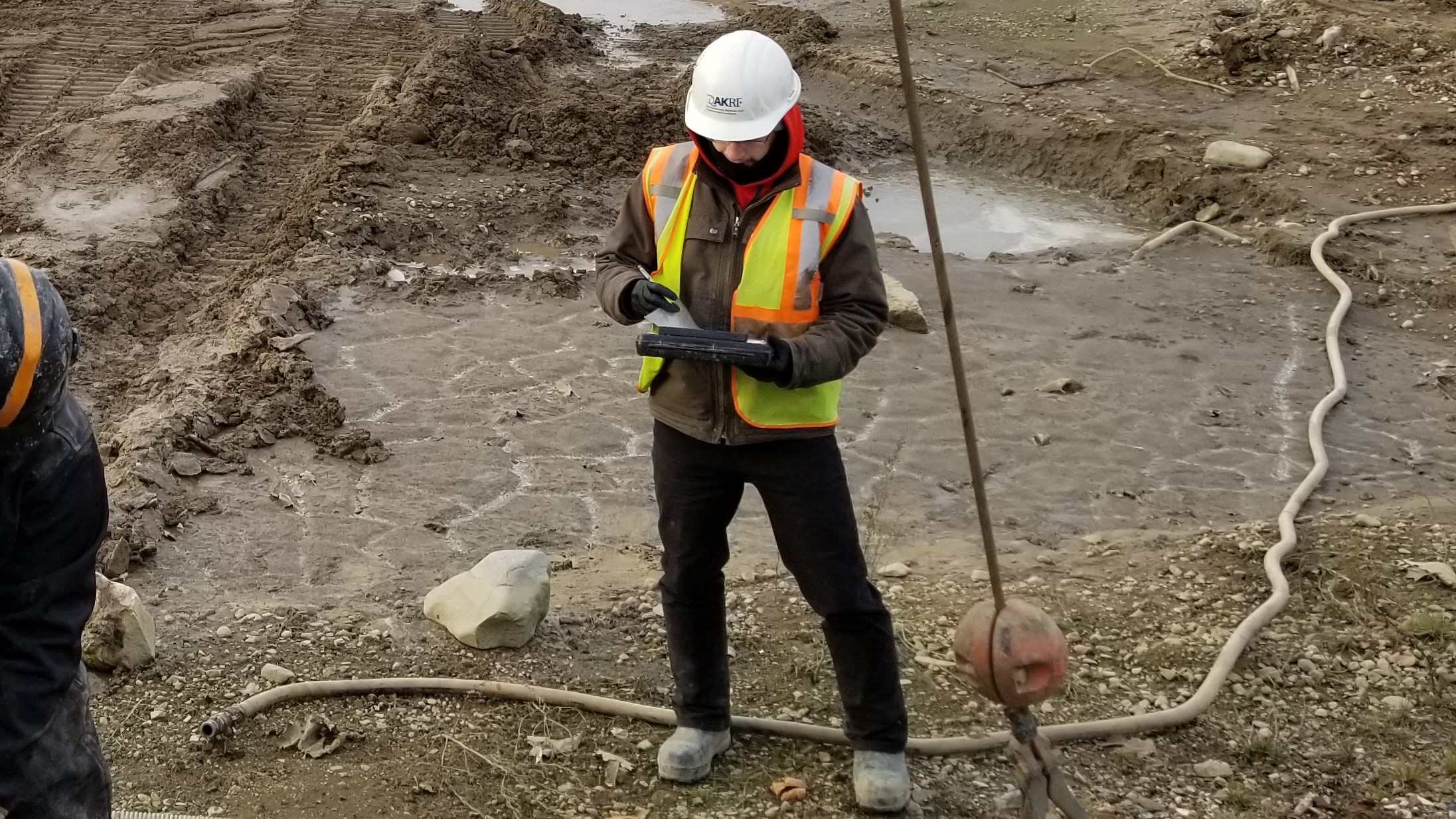The Duty of a Consulting Engineer in Ensuring Safe and Efficient Building Practices
Wiki Article
Checking Out the Cutting-edge Techniques and Technologies Forming the Future of the Geotechnical Industry for Sustainable Design Solutions
The geotechnical sector is going through a transformative change, driven by innovative methods and modern technologies that stress sustainable engineering options. Advanced dirt stablizing methods, the usage of wise materials, and the application of data analytics are redefining just how we approach infrastructure challenges.Advanced Soil Stabilization Methods
Dirt stabilization is a crucial procedure in geotechnical engineering, intended at improving the physical buildings of soil to boost its load-bearing ability and toughness. Advanced dirt stabilization strategies play an essential function in dealing with challenges connected with unsteady or weak dirts, thereby allowing risk-free and reliable building practices.Among the noticeable techniques, chemical stabilization includes making use of ingredients such as lime, concrete, or fly ash, which respond with dirt particles to form an extra natural mass. This method is especially efficient in improving the toughness and dampness resistance of extensive clay soils. Mechanical stabilization, on the other hand, includes the physical alteration of dirt residential or commercial properties with compaction or the unification of granular products, leading to enhanced thickness and security.
Another innovative method is the use of geosynthetics, which offer support and reduce dirt erosion while boosting water drainage. Methods like dirt blending and deep soil stabilization are additionally getting traction, enabling in-situ therapy of troublesome dirts. Jointly, these sophisticated techniques not only enhance the efficiency of dirt structures however additionally add to sustainable engineering methods by lessening the need for substantial excavation and product transportation.
Smart Materials in Geotechnics
Development goes to the leading edge of geotechnical design, specifically with the unification of smart products that boost the efficiency and functionality of dirt structures. Smart materials, such as form memory alloys, piezoelectric products, and self-healing polymers, are transforming the way designers approach soil stablizing and framework long life (engineer of record). These products can adapt to changing ecological problems, reply to stress and anxiety, and also fix themselves, dramatically boosting the durability of geotechnical systemsAs an example, piezoelectric products can create electric fees in reaction to mechanical stress, supplying prospective for real-time monitoring of dirt problems and structural stability. Likewise, self-healing products can autonomously repair fractures and problems, minimizing maintenance costs and prolonging the lifespan of geotechnical properties. The integration of these wise products not only improves the mechanical buildings of soil however likewise adds to sustainable engineering methods by lessening resource intake and ecological effect.
As the geotechnical market remains to advance, the adoption of clever products will play an essential function in establishing innovative services, making certain that facilities are not just robust yet also versatile to future obstacles. This transformative approach is poised to redefine the standards of safety and security and efficiency in geotechnical engineering.
Information Analytics for Facilities
The combination of wise products in geotechnical engineering has led the way for advanced techniques, specifically in the realm of data analytics for framework. This ingenious technique leverages considerable information collection and analytical methods to enhance decision-making procedures throughout the facilities lifecycle. By utilizing sensing units embedded in smart products, designers can continually keep an eye on important criteria such as dirt security, moisture degrees, and architectural integrity.Information analytics enables the makeover of raw data into actionable understandings, enabling predictive maintenance and boosted risk administration. Advanced formulas and artificial intelligence methods facilitate the identification of abnormalities and patterns, which can maximize and educate timely interventions source allowance. In addition, integrating geographic info systems (GIS) boosts spatial evaluation, more improving the decision-making structure.
As facilities projects expand in complexity, the dependence on data analytics comes to be significantly necessary. It fosters a proactive technique, minimizing the chance of failures and making certain the long life and sustainability of structures. By using the power of information analytics, the geotechnical sector is placed to not just boost existing methods but likewise pioneer ingenious solutions for future facilities challenges. This harmony of technology and engineering concepts will certainly define the future of lasting facilities advancement.

Lasting Ground Renovation Methods
Various sustainable ground enhancement approaches are arising as vital solutions to attend to the obstacles of geotechnical engineering while minimizing ecological influence. These approaches not just boost dirt efficiency however likewise promote environmental stewardship by minimizing dependence on typical, more invasive methods.
Another innovative approach is the application of geosynthetics, that includes biodegradable products that strengthen soil while promoting water drainage and disintegration geo tech engineer control - engineer of record. This reduces the demand for heavy machinery and decreases website disruption, therefore preserving local ecological communities
On top of that, methods such as dynamic compaction and vibro-replacement have evolved to consist of sustainable methods, lowering and incorporating recycled products carbon impacts. These methods exemplify the sector's change in the direction of even more ecologically accountable services, guaranteeing that ground renovation not only meets design needs however also contributes positively to the surrounding atmosphere.
Developments in Environmental Surveillance
In recent times, developments in environmental monitoring have actually considerably enhanced the capability to evaluate and handle geotechnical jobs with minimal ecological disturbance. Cutting-edge technologies, such as remote noticing, Web of Points (IoT) tools, and real-time information analytics, are changing just how environmental impacts are determined and reduced.Remote sensing modern technologies, including satellite images and airborne LiDAR, promote the rapid analysis of land use modifications and environmental conditions - engineer of record. These devices permit continuous monitoring of websites, allowing engineers to recognize prospective issues prior to they intensify. Additionally, IoT tools, furnished with sensors for criteria like dirt dampness, gas, and temperature discharges, provide real-time data streams that boost the understanding of site-specific environmental variables
Real-time information analytics even more refine decision-making procedures by integrating data from various resources, permitting aggressive management approaches. This holistic strategy not only guarantees conformity with environmental guidelines but likewise promotes lasting practices within the geotechnical sector.
As these developments proceed to progress, they hold the potential to connect the space in between design objectives and ecological stewardship, cultivating a more sustainable future for geotechnical tasks worldwide.
Conclusion
In final thought, the geotechnical sector is undergoing a transformative development driven by cutting-edge strategies and technologies that prioritize sustainability. Advanced dirt stablizing methods, the integration of wise products, and the application of information analytics jointly enhance the resilience and effectiveness of framework. Furthermore, sustainable ground improvement techniques and technologies in environmental monitoring underscore the market's commitment to environmental stewardship. These advancements not just address modern design obstacles yet additionally lead the way for an extra lasting future in geotechnical techniques.Techniques like dirt blending and deep dirt stabilization are likewise obtaining traction, allowing for in-situ treatment of bothersome soils. Jointly, these innovative approaches not only improve the efficiency of soil frameworks however additionally contribute to lasting engineering methods by reducing the demand for considerable excavation and material transportation.

Report this wiki page